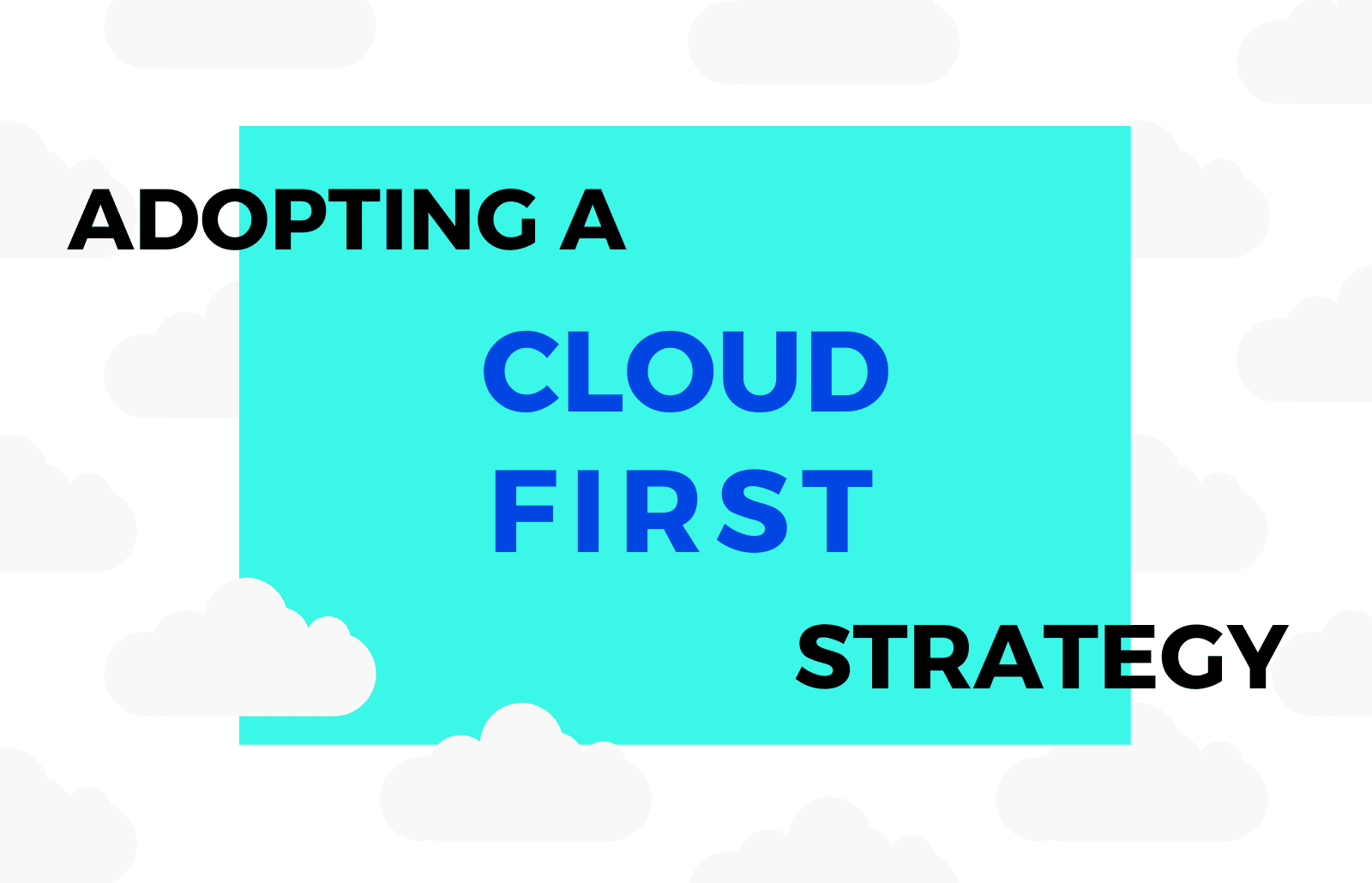In today’s rapidly evolving technological landscape, businesses must stay agile and adaptive to maintain their competitive edge. A cloud-first strategy has emerged as an essential approach, enabling organisations to leverage the power and flexibility of cloud computing.
Technology is expanding at a rapid pace, and businesses are looking at digital transformation initiatives to stay competitive. Adopting a cloud-first strategy is becoming vital as businesses seek to leverage cloud computing capabilities to stay ahead in the game. Find out why you should be an early cloud-first strategy adopter.
Harnessing the Power of Cloud Solutions for Business Agility and Innovation
Today’s cloud remains a platform for innovative growth with reliable and guaranteed levels of performance and uptime. Cloud-based infrastructure is becoming mainstream, and digital transformation goals make businesses explore cloud solutions.
The COVID pandemic forced organisations to transition to a remote work-from-home model. Cloud strategy and solutions enable secure access to applications, data, and storage from any device that has internet connectivity. By the year 2025, it is projected by Gartner that cloud-native platforms will host more than 95% of new digital workloads, a significant increase from the 30% seen in 2021.
The cloud-first strategy is becoming famous due to the immense benefits of cloud computing. In this article, you can learn about a cloud-first strategy, its benefits, and how to adopt it in your organisation.
What is a Cloud-first Strategy?
An organisation will first consider cloud-based solutions as a primary enabler before others when developing new solutions or enhancing IT systems and infrastructure. In simple words, cloud-first strategies are ways teams move most of their workloads and operations to cloud-computing platforms. Some of today’s most popular cloud platforms are Amazon Web Services, Google Cloud, and Microsoft Azure.
Instead of employing physical resources such as server clusters and physically dedicated IT infrastructure, organisations store resources in the cloud, including mission-critical and secure resources. When organisations adopt a cloud-first strategy, planning for a cloud-first strategy is essential.
Things to Consider When Adopting Cloud Technologies
Many businesses have introduced cloud computing gradually, addressing individual departmental needs as they arise. Many other times, a company may have adopted cloud-based initiatives without consulting appropriate IT cloud specialists.
In those cases, they miss out on planning a centralised strategy for enterprise-wide cloud adoption with a holistic approach. Without a structured approach to adopting the cloud, organisations are susceptible to “cloud sprawl”. This can lead to an increase in IT costs and pose compliance and security issues.
Benefits of a Cloud-First Strategy
A cloud-centric approach enables businesses and organisations to capitalise on cloud technology’s multiple benefits. Organisations can have various reasons for picking this approach, and they can differ from one organisation to another. Your organisation must conduct a proper analysis on the cloud needs for your organisation. Some of the benefits of a cloud-first approach are as follows:
a) Increased Innovation Speed
Adopting a cloud-centric strategy provides flexibility and inventive potential, allowing businesses to explore and innovate across all aspects, ranging from their overarching business framework to daily processes, ultimately leading to expedited service delivery.
The ability to quickly innovate while improving the end-user experience helps businesses achieve agility. Organisations can shift to an agile model and use Continuous Integration and Continuous Delivery (CI/CD) practices supported by a cloud-first approach. Enhanced cloud-based integration capabilities enable seamless integration with other cloud apps.
b) Ability to Scale
The cloud offers scalability on demand. In times of heavy traffic or website activity, you can access more servers quickly and easily. That means, for example, in the case of an eCommerce website, if your website is experiencing massive web traffic during holiday times, having a cloud-based infrastructure can enable you to access more servers for a limited amount of time and avoid performance issues.
Thanks to auto-scaling, public cloud-based systems can scale up and deliver high performance when required. Using more resources increases the cost, but more business revenue makes it often worth it, besides offering competitive advantages and enhancing business reputation.
c) Improve Cost Efficiency
Cloud computing is available at a much cheaper cost when compared to maintaining your machines. For example, here are the typical costs of maintaining on-site servers:
- IT infrastructure, server maintenance staff
- Cost of purchasing servers and other related IT hardware
- Renting an actual IT data centre or physical storage space, etc.
If your organisation is not a large-scale enterprise, transitioning your infrastructure to the cloud is almost always more reasonable.
d) Increased Reliability
Hardware failures or power outages can happen to any IT infrastructure. These can become disastrous if the related data and applications are critical for business. Here’s where the cloud can help. As cloud providers configure automatic backup and standby servers, minimal downtime or switching to mirror servers can leave a minimal impact on the outage.
e) Increased Visibility
You need to know how your applications or sites are performing quickly. In the case of physical machines, you need to go and check each of them, which is a time-consuming and cumbersome affair. However, cloud providers offer various integrated tools that show the application status on interactive centralised dashboards so you can periodically check it on the IT landscape.
Embracing a Cloud-First Approach: Transforming Your Organization for the Future
Adapting to change is vital to business growth, and adopting a cloud-first strategy is no exception. Here are some essential points to consider as you embark on this journey into the world of cloud computing services:
1- Building a Cloud-First Culture with Education:
To successfully implement a cloud-first strategy and achieve your business goals, fostering a cloud-first culture within your organisation is crucial. Encourage cooperation and open communication among team members as they navigate the transition to a cloud environment. Staff members should feel at ease inquiring and requesting further explanations during the procedure.
Transparency is key when making technology decisions related to cloud-based services. Ensure that you emphasise the importance of your cloud-first approach and educate your staff about the benefits of migrating workloads to the cloud. Explain how this shift will streamline their job responsibilities, improve productivity, and contribute to the overall business strategy.
Your technical team must have the expertise to handle cloud infrastructure and meet regulatory requirements. Providing them with support from knowledgeable experts will instil confidence in the staff. Consider involving a mentor to guide them throughout the transition process.
2- Leveraging Automation and Self-Service Options:
Cloud computing services offer a wealth of automation and self-service capabilities, enabling your organisation to optimise its resources and focus on higher-value tasks. Cloud providers manage the infrastructure, so your team can concentrate on meeting your business goals.
One primary benefit of cloud-based services is their resilience against natural disasters, ensuring a reliable and secure cloud environment. This abundance of self-service features allows your IT department to automate specific traditional procedures and processes, catering to both business users and help desk teams.
By harnessing the power of cloud computing services, these teams can independently perform various IT operations, such as file transfers, password resets, and batch processes, which will align with their business goals.
Harnessing Private Cloud Infrastructure for Enhanced Control, Compliance, and Collaboration
By automating these tasks, IT administrators can focus on more strategic initiatives, such as improving service levels and lowering expenses. This shift ultimately leads to increased productivity, enhanced customer experiences, and greater resilience against natural disasters and other disruptions. Embrace the power of private cloud infrastructure to meet your organisation’s unique needs and objectives while staying ahead in the competitive landscape.
In addition, choosing a private cloud infrastructure can offer more control and customization to meet regulatory requirements, making it a crucial consideration in technology decisions.
Adopting cloud-based services as part of a broader business strategy enables organisations to create a thriving cloud community where they can easily collaborate, innovate, and scale their software applications. This approach ensures that companies stay competitive while fulfilling their unique business needs and objectives.
Automating these tasks frees up IT administrators to focus on more strategic initiatives, improving service levels and lowering expenses. This shift ultimately leads to increased productivity, enhanced customer experiences, and greater resilience against natural disasters and other disruptions.
Final Thoughts on Cloud-First Strategies
Adopting a cloud-first strategy can revolutionise your organisation by streamlining operations, enhancing productivity, and providing a secure, scalable infrastructure. By embracing this approach and fostering a cloud-first culture, your business can stay ahead in the ever-evolving cloud community, and continue to thrive in the digital age.
Adopting cloud services and their unparalleled capabilities provides an organisation with a wide range of benefits. If you are not sure of the exact route you should take to achieve the best results, working with external experts and using their know-how may be just what you need.
Crafting Exceptional Custom Software with Zartis: Your Trusted Development Partner
Zartis is a software development company that specialises in bespoke software development. We work with clients to understand their unique needs and requirements and then use our expertise and experience to design and develop custom software solutions that meet those needs.
We offer a range of services, including product management, QA, DevOps and automation, and security. We are committed to providing ongoing support and maintenance for the products we build. With Zartis, you can trust that you will receive high-quality software development services that are tailored to your specific needs and requirements. Reach out now!


